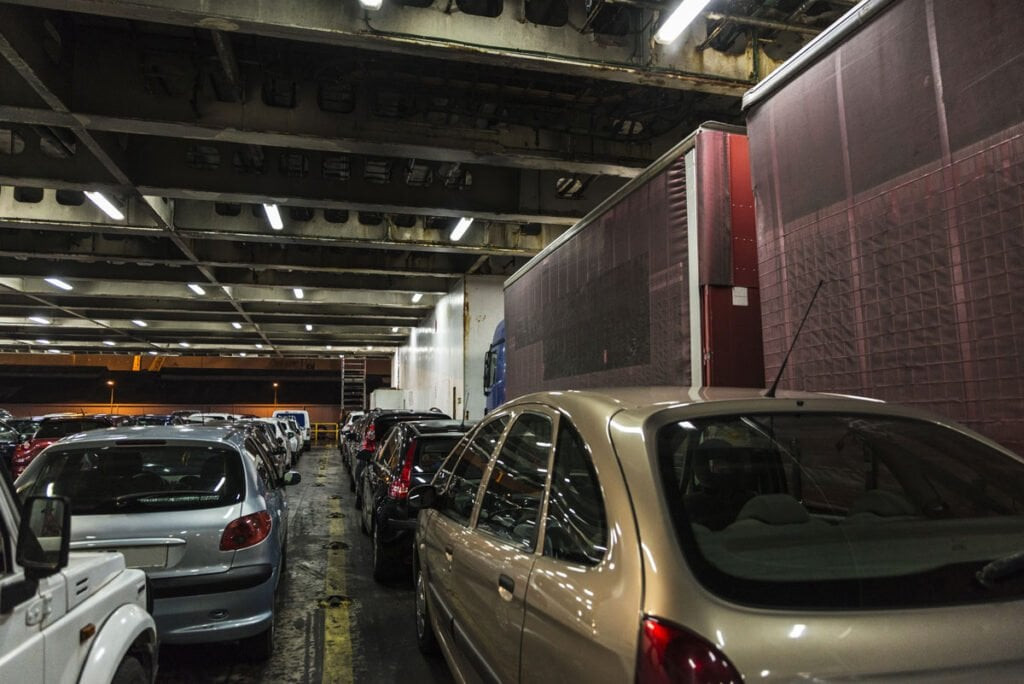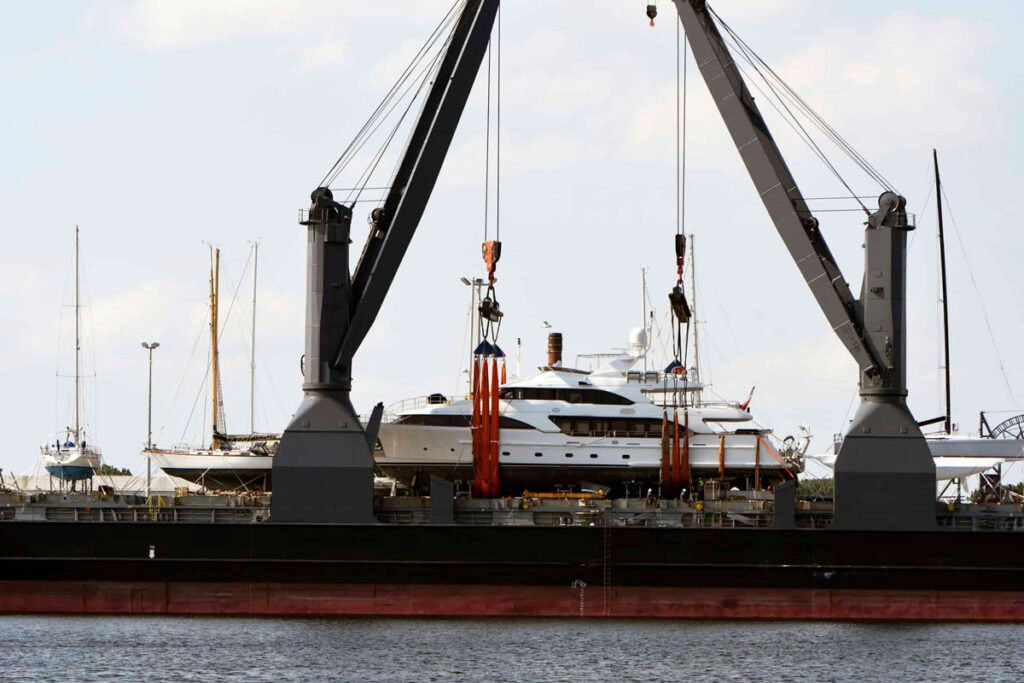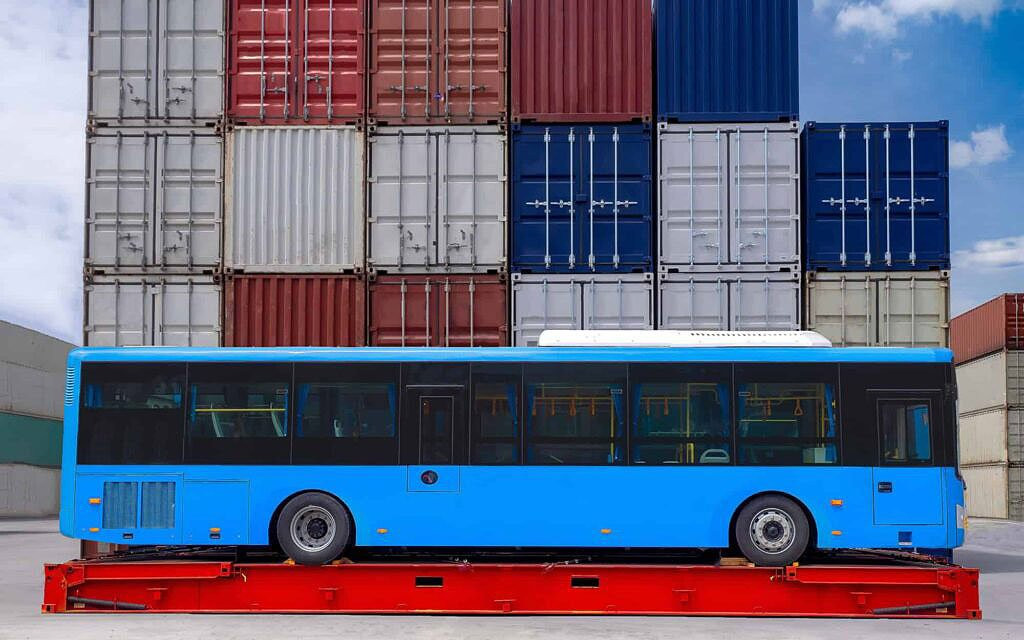Shipping a car from the USA to Mexico can seem daunting, but with the right guidance, it’s a smooth ride. At gaymexico.net, we provide clear, comprehensive information to help you navigate the process, ensuring your vehicle arrives safely and efficiently. We are committed to making your move or extended stay in Mexico as seamless as possible, providing LGBTQ+ travelers and residents with the resources they need. If you are planning to relocate or spend an extended period in Mexico, understanding the auto transport landscape is crucial.
1. Understanding The Basics Of Car Shipping To Mexico
Shipping a car from the USA to Mexico involves several key considerations. Understanding these can help you make informed decisions and avoid unexpected issues.
So, what should you know?
Shipping a car to Mexico requires understanding customs regulations, choosing the right shipping method, and preparing your vehicle properly. Each of these steps plays a crucial role in ensuring a smooth and successful transport.
1.1. Why Ship Your Car to Mexico?
There are many valid reasons to ship your car to Mexico, including:
- Relocation: Moving to Mexico permanently or for an extended period.
- Business: Transporting commercial vehicles or equipment.
- Tourism: Exploring Mexico with the convenience of your own vehicle.
- Personal Preference: Preferring your own car for comfort and familiarity.
For LGBTQ+ travelers and residents, having a personal vehicle can provide a sense of security and independence, especially when exploring diverse regions of Mexico.
1.2. Key Considerations Before Shipping
Before you start the shipping process, think about these important factors:
- Cost: Understand all potential expenses, including shipping fees, import duties, and taxes.
- Regulations: Research Mexico’s import regulations and ensure your vehicle meets all requirements.
- Documentation: Prepare all necessary documents, such as title, registration, and proof of ownership.
- Insurance: Obtain adequate insurance coverage for your vehicle during transport.
According to Mexican law, vehicles imported permanently must meet specific emissions standards and safety requirements.
1.3. Ensuring Compliance
The best way to guarantee a seamless shipping experience is by ensuring that your car meets the requirements of both US and Mexican Customs.
Here is a detailed breakdown:
- Obtain copies of all the forms you need to fill out
- Make sure that your car complies with Mexico’s environmental regulations
- Check that all the equipment in your vehicle is compliant with Mexico’s safety requirements
- Get your paperwork in order.
- It’s often easier to work with a shipping broker who is accustomed to dealing with US and Mexican Customs.
 RORO remains as one of the best and most economical ways to ship a vehicle.
RORO remains as one of the best and most economical ways to ship a vehicle.
2. Choosing The Right Shipping Method For Your Car To Mexico
Selecting the appropriate shipping method is crucial for a smooth and cost-effective car transport from the USA to Mexico. There are several options available, each with its own advantages and disadvantages.
So, what options do you have?
The main methods for shipping a car to Mexico include Roll-on/Roll-off (RORO), Lift-on/Lift-off (LOLO), container shipping, and flat rack shipping. Your choice will depend on your budget, the type of vehicle, and your timeline.
2.1. Roll-On/Roll-Off (RORO) Shipping
RORO shipping involves driving your vehicle onto a specialized vessel designed for transporting cars and other wheeled cargo.
Here is some information about RORO:
- Cost-Effective: Generally the cheapest option, as it requires minimal handling.
- Convenient: Simple process with minimal lifting, ensuring a safe shipping process.
- Suitable For: Cars, trucks, and other standard vehicles.
- Limitations: Vehicles must be in operational condition.
According to industry data, RORO shipping accounts for approximately 60% of all vehicle shipments to Mexico due to its cost-effectiveness and ease of use.
2.2. Lift-On/Lift-Off (LOLO) Shipping
LOLO shipping uses cranes to lift vehicles onto and off the ship.
Here is some information about LOLO:
- Good For: Inoperable vehicles or oversized equipment that cannot be driven.
- Available From: Any port in the world.
- Cost Efficient: Vehicles do not have to be driven onto the transporting vessel.
- Slower: More complex to prepare than RORO.
LOLO shipping is particularly useful for transporting large yachts or vehicles that don’t fit on standard trailers.
2.3. Container Shipping
Container shipping involves securing your vehicle inside a shipping container for transport.
Here is some information about container shipping:
- Safe: Provides maximum protection from the elements and potential damage.
- Suitable For: Luxury or high-value vehicles.
- More Expensive: Higher cost due to the additional handling and container fees.
- Versatile: Can also include personal belongings in the same container.
Container shipping is often preferred for luxury cars due to the added protection it offers during transit.
2.4. Flat Rack Shipping
Flat rack shipping involves securing the vehicle to a metal frame or platform.
Here is some information about flat rack shipping:
- Ideal For: Vehicles with unusual dimensions, heavy industrial vehicles, and oversized trucks.
- Flexible: Can accommodate a wide range of vehicle sizes and shapes.
- Secure: Vehicles are secured onto a metal frame.
- Commonly Used: To transport all sorts of vehicles with unusual dimensions such as heavy industrial vehicles, yachts, oversized trucks, vehicles on tracks and machinery.
Flat rack shipping is frequently used for transporting construction and agricultural equipment due to its ability to handle oversized cargo.
 Luxury vehicles and yacht shipping to Mexico
Luxury vehicles and yacht shipping to Mexico
3. Preparing Your Car For Shipping To Mexico
Proper preparation is essential to ensure your vehicle arrives safely and complies with all regulations.
What steps should you take to prepare your car?
Preparing your car for shipping involves cleaning, inspecting, and securing it, as well as gathering all necessary documentation. Following these steps will help prevent delays and potential damage during transit.
3.1. Cleaning And Inspection
- Clean Thoroughly: Remove all dirt, debris, and personal belongings from the vehicle.
- Inspect For Damage: Document any existing scratches, dents, or other damage with photos and videos.
- Check Fluids: Ensure all fluid levels are adequate and there are no leaks.
Cleaning your vehicle thoroughly helps prevent the spread of invasive species, which is a concern for customs officials.
3.2. Securing The Vehicle
- Disable Alarm System: Prevent the alarm from going off during transit.
- Remove Loose Items: Secure or remove any loose parts or accessories.
- Protect Exterior: Consider using a car cover to protect the paint from scratches.
Securing your vehicle properly minimizes the risk of damage during shipping.
3.3. Documentation
- Title And Registration: Provide original copies of the vehicle’s title and registration.
- Proof Of Ownership: Include a bill of sale or other documentation to prove ownership.
- Insurance Policy: Provide a copy of your insurance policy.
- Identification: Include a copy of your driver’s license or passport.
Ensure all documents are readily available to avoid delays during customs clearance.
3.4. Preparing for Mexican Customs
- Hire a customs broker
- Make sure your paperwork is in order
- Obtain copies of all the forms you need to fill out
- Be prepared to pay import tariffs
- Obtain Mexican auto insurance
 Vehicles in containers being loaded in a container ship to Mexico.
Vehicles in containers being loaded in a container ship to Mexico.
4. Understanding The Costs Involved In Shipping A Car To Mexico
Shipping a car to Mexico involves various costs, and it’s important to have a clear understanding of each to budget effectively.
What expenses should you expect?
The costs of shipping a car to Mexico include shipping fees, import duties, taxes, and other miscellaneous expenses. Being aware of these costs will help you avoid surprises and plan your finances accordingly.
4.1. Shipping Fees
- Base Shipping Cost: This is the primary cost of transporting your vehicle, which varies based on the shipping method, distance, and carrier.
- Port Fees: Charges for handling your vehicle at the origin and destination ports.
- Insurance: Cost of insuring your vehicle during transit.
Shipping fees can range from $800 to $3,000 depending on the factors mentioned above.
4.2. Import Duties And Taxes
- Import Duty: Mexico charges an import duty on vehicles, which is typically a percentage of the vehicle’s value.
- Value Added Tax (VAT): Also known as IVA (Impuesto al Valor Agregado), this tax is applied to the vehicle’s value plus the import duty.
Import duties and VAT can significantly increase the overall cost of shipping a car to Mexico, often adding up to 20-50% of the vehicle’s value.
4.3. Other Expenses
- Customs Broker Fees: Fees for hiring a customs broker to assist with import procedures.
- Inspection Fees: Charges for mandatory vehicle inspections.
- Storage Fees: Costs for storing your vehicle at the port if it’s not immediately picked up.
- Transportation Costs: Expenses for transporting your vehicle from the port to its final destination in Mexico.
Other expenses can add an additional $300 to $1,000 to the total cost.
4.4. Tips for Reducing Costs
- Compare Quotes: Get quotes from multiple shipping companies to find the best rate.
- Choose RORO Shipping: If possible, opt for RORO shipping as it’s generally the most affordable option.
- Prepare Documents: Ensure all your documents are in order to avoid delays and additional fees.
- Plan Ahead: Book your shipment in advance to secure better rates and avoid last-minute price increases.
Planning ahead and comparing quotes can save you a significant amount of money on your car shipping expenses.
 Platform/Flat rack container shipping loading truck for export at containers yard.
Platform/Flat rack container shipping loading truck for export at containers yard.
5. Navigating Customs And Regulations In Mexico
Understanding and complying with Mexican customs regulations is critical for a successful car import.
What regulations should you be aware of?
Navigating customs in Mexico involves understanding import requirements, preparing necessary documents, and working with a customs broker. Following these guidelines will help you avoid delays and ensure a smooth import process.
5.1. Import Requirements
- Vehicle Eligibility: Ensure your vehicle meets Mexico’s import eligibility criteria, including emissions and safety standards.
- Temporary Import Permit: Obtain a temporary import permit (TIP) if you’re not importing the vehicle permanently.
- Permanent Import: If importing permanently, ensure your vehicle complies with Mexican regulations and standards.
According to Mexican law, vehicles older than 10 years may face restrictions or higher import duties.
5.2. Required Documents
- Title And Registration: Provide original copies of the vehicle’s title and registration.
- Bill Of Sale: Include a bill of sale or invoice showing the purchase price of the vehicle.
- Import Permit: Obtain the necessary import permit from Mexican customs authorities.
- Proof Of Insurance: Provide proof of Mexican auto insurance.
- Identification: Include a copy of your driver’s license or passport.
Having all required documents readily available is essential for a smooth customs clearance process.
5.3. Working With A Customs Broker
- Expertise: Customs brokers have expertise in Mexican import regulations and procedures.
- Assistance: They can assist with preparing and submitting required documents.
- Efficiency: Brokers can help expedite the customs clearance process and avoid delays.
Hiring a customs broker can save you time and reduce the risk of errors or complications during the import process.
5.4. Common Pitfalls To Avoid
- Incomplete Documentation: Ensure all documents are complete and accurate.
- Non-Compliance: Make sure your vehicle meets all Mexican regulations and standards.
- Unpaid Duties And Taxes: Pay all required duties and taxes on time to avoid penalties.
- Lack Of Insurance: Obtain Mexican auto insurance before importing your vehicle.
Avoiding these pitfalls can help ensure a smooth and trouble-free car import experience.
6. Finding Reliable Car Shipping Companies
Choosing a reliable shipping company is crucial for a safe and efficient car transport to Mexico.
How do you select a trustworthy company?
Finding a reliable car shipping company involves researching, comparing quotes, checking reviews, and verifying credentials. Taking these steps will help you choose a company that meets your needs and provides a smooth shipping experience.
6.1. Research And Compare
- Online Search: Use online search engines to find car shipping companies that offer services to Mexico.
- Compare Quotes: Request quotes from multiple companies and compare their prices, services, and terms.
- Check Credentials: Verify that the company is licensed and insured.
Comparing quotes from multiple companies can help you find the best rate and service.
6.2. Read Reviews And Testimonials
- Online Reviews: Check online review sites and forums for customer reviews and testimonials.
- BBB Rating: Look for the company’s rating with the Better Business Bureau (BBB).
- Ask For References: Request references from the company and contact them to inquire about their experience.
Reading reviews and testimonials can provide valuable insights into the company’s reputation and service quality.
6.3. Verify Credentials
- Licensing: Ensure the company is licensed by the relevant authorities to operate as a car shipping company.
- Insurance: Verify that the company has adequate insurance coverage to protect your vehicle during transit.
- Certifications: Check for any industry certifications or affiliations that demonstrate the company’s expertise and professionalism.
Verifying credentials ensures that you’re working with a reputable and qualified shipping company.
6.4. Questions To Ask
- Experience: How long has the company been in business?
- Services: What services are included in the quote (e.g., door-to-door, port-to-port)?
- Insurance Coverage: What type of insurance coverage is provided?
- Tracking: Is real-time tracking available for your shipment?
- Customs Assistance: Does the company offer assistance with customs clearance?
Asking these questions can help you assess the company’s capabilities and ensure they meet your specific needs.
7. Insurance Options For Car Shipping To Mexico
Insuring your vehicle during transport is essential to protect against potential damage or loss.
What insurance options are available?
Insurance options for car shipping to Mexico include all-risk coverage, total loss coverage, and limited liability coverage. Understanding these options will help you choose the right insurance policy to protect your vehicle during transit.
7.1. Types Of Coverage
- All-Risk Coverage: Provides comprehensive coverage against all types of damage or loss during transit.
- Total Loss Coverage: Covers the total loss of your vehicle due to theft, accident, or other covered events.
- Limited Liability Coverage: Provides limited coverage for specific types of damage or loss.
All-risk coverage offers the most comprehensive protection for your vehicle during shipping.
7.2. Factors Affecting Insurance Rates
- Vehicle Value: The value of your vehicle is a primary factor in determining insurance rates.
- Shipping Method: The shipping method can affect insurance rates, with container shipping generally having lower rates due to the added protection.
- Coverage Type: The type of coverage you choose will impact the insurance rate.
The higher the value of your vehicle and the more comprehensive the coverage, the higher the insurance rate will be.
7.3. Choosing The Right Policy
- Assess Your Needs: Determine the level of coverage you need based on the value of your vehicle and your risk tolerance.
- Read The Fine Print: Carefully review the terms and conditions of the insurance policy before purchasing it.
- Compare Quotes: Get quotes from multiple insurance providers and compare their coverage and rates.
Choosing the right insurance policy ensures that your vehicle is adequately protected during transport.
7.4. Filing A Claim
- Document Damage: If your vehicle is damaged during transit, document the damage with photos and videos.
- Notify The Insurance Company: Notify the insurance company as soon as possible after discovering the damage.
- File A Claim: Follow the insurance company’s instructions for filing a claim and provide all required documentation.
Filing a claim promptly and providing accurate documentation can help expedite the claims process.
8. Tips For A Smooth Car Shipping Experience To Mexico
Following these tips can help ensure a smooth and hassle-free car shipping experience to Mexico.
What steps can you take to ensure a smooth shipment?
Ensuring a smooth car shipping experience to Mexico involves planning ahead, preparing your vehicle properly, understanding regulations, and staying informed. Following these tips will help you avoid potential issues and ensure a successful transport.
8.1. Plan Ahead
- Start Early: Begin planning your car shipment well in advance of your desired shipping date.
- Research: Research shipping companies, customs regulations, and insurance options.
- Book In Advance: Book your shipment in advance to secure better rates and avoid last-minute price increases.
Planning ahead can help you avoid stress and ensure a smooth shipping experience.
8.2. Prepare Your Vehicle
- Clean And Inspect: Clean your vehicle thoroughly and document any existing damage.
- Secure Loose Items: Remove or secure any loose items inside the vehicle.
- Check Fluids: Ensure all fluid levels are adequate and there are no leaks.
Preparing your vehicle properly minimizes the risk of damage during transit.
8.3. Understand Regulations
- Import Requirements: Understand Mexico’s import requirements and ensure your vehicle meets all criteria.
- Documentation: Prepare all necessary documents, such as title, registration, and proof of ownership.
- Customs Procedures: Familiarize yourself with Mexican customs procedures and requirements.
Understanding regulations helps you avoid delays and ensure compliance with Mexican law.
8.4. Stay Informed
- Track Your Shipment: Use the shipping company’s tracking system to monitor the progress of your shipment.
- Communicate: Stay in communication with the shipping company and customs broker throughout the process.
- Be Prepared For Delays: Be aware that unforeseen delays can occur and be prepared to handle them.
Staying informed helps you stay on top of your shipment and address any issues that may arise.
9. Addressing Concerns For LGBTQ+ Travelers And Residents
For LGBTQ+ travelers and residents, shipping a car to Mexico involves additional considerations to ensure safety and comfort.
What specific concerns should be addressed?
Addressing concerns for LGBTQ+ travelers and residents involves researching LGBTQ+-friendly areas, understanding local laws, and connecting with local LGBTQ+ communities. Taking these steps will help ensure a safe and welcoming experience in Mexico.
9.1. Research LGBTQ+-Friendly Areas
- Popular Destinations: Identify LGBTQ+-friendly cities and regions in Mexico, such as Puerto Vallarta, Mexico City, and Cancun.
- Local Resources: Research local LGBTQ+ resources, including community centers, organizations, and events.
- Accommodation: Choose LGBTQ+-friendly accommodations, such as hotels and guesthouses that cater to the community.
Researching LGBTQ+-friendly areas can help you choose a destination that aligns with your values and preferences.
9.2. Understand Local Laws And Customs
- Legal Protections: Understand Mexico’s laws and legal protections for LGBTQ+ individuals.
- Social Attitudes: Be aware of local social attitudes towards LGBTQ+ people and exercise caution in more conservative areas.
- Cultural Sensitivity: Respect local customs and traditions.
Understanding local laws and customs can help you navigate potential challenges and ensure a safe and respectful experience.
9.3. Connect With Local LGBTQ+ Communities
- Online Forums: Join online forums and social media groups for LGBTQ+ travelers and residents in Mexico.
- Community Centers: Visit local LGBTQ+ community centers to connect with other members of the community.
- Events And Activities: Participate in LGBTQ+ events and activities to meet new people and build connections.
Connecting with local LGBTQ+ communities can provide valuable support, resources, and a sense of belonging.
9.4. Safety Tips
- Be Discreet: Exercise discretion in public displays of affection, especially in more conservative areas.
- Travel In Groups: When possible, travel in groups or with trusted companions.
- Stay Informed: Stay informed about local news and events that may affect the LGBTQ+ community.
- Emergency Contacts: Keep a list of emergency contacts and resources readily available.
Following these safety tips can help you minimize risks and ensure a safe and enjoyable experience in Mexico.
At gaymexico.net, we are committed to providing LGBTQ+ travelers and residents with the resources and information they need to thrive in Mexico. Contact us at Address: 3255 Wilshire Blvd, Los Angeles, CA 90010, United States. Phone: +1 (213) 380-2177.
10. Frequently Asked Questions (FAQs)
Here are some frequently asked questions about shipping a car from the USA to Mexico:
10.1. How long does it take to ship a car from the USA to Mexico?
The shipping time varies depending on the origin and destination ports, shipping method, and customs clearance process. Generally, it takes between 1 to 4 weeks.
10.2. What documents do I need to ship a car to Mexico?
You’ll typically need the original title and registration, a bill of sale, proof of insurance, and a copy of your driver’s license or passport.
10.3. Can I ship personal belongings in the car?
It’s generally not recommended to ship personal belongings inside the car, especially with RORO shipping. Container shipping allows for the inclusion of personal items, but it’s important to create an itemized list for customs.
10.4. How much does it cost to ship a car to Mexico?
The cost varies depending on the shipping method, distance, and vehicle value. Shipping fees can range from $800 to $3,000, and import duties and taxes can add an additional 20-50% of the vehicle’s value.
10.5. Do I need Mexican auto insurance?
Yes, you are required to have Mexican auto insurance to legally drive your car in Mexico.
10.6. Can I ship a car that is not in running condition?
Yes, but you’ll need to use LOLO shipping, which uses cranes to lift the vehicle onto the ship.
10.7. What is a temporary import permit (TIP)?
A TIP allows you to temporarily import your vehicle into Mexico for tourism purposes. The vehicle must be exported before the permit expires.
10.8. Do I need a customs broker?
While it’s not always required, hiring a customs broker is highly recommended. They can assist with preparing documents, navigating customs procedures, and avoiding delays.
10.9. What are the most LGBTQ+-friendly cities in Mexico?
Popular LGBTQ+-friendly cities in Mexico include Puerto Vallarta, Mexico City, and Cancun.
10.10. Where can I find more information about LGBTQ+ resources in Mexico?
You can find more information on websites like gaymexico.net, which provides resources, guides, and information for LGBTQ+ travelers and residents in Mexico.
Shipping a car from the USA to Mexico requires careful planning and attention to detail. By understanding the process, preparing your vehicle properly, and working with reliable professionals, you can ensure a smooth and successful car transport experience. For LGBTQ+ travelers and residents, taking additional steps to research LGBTQ+-friendly areas and connect with local communities can help ensure a safe and welcoming experience in Mexico. Visit gaymexico.net for more information and resources to help you make the most of your time in Mexico.